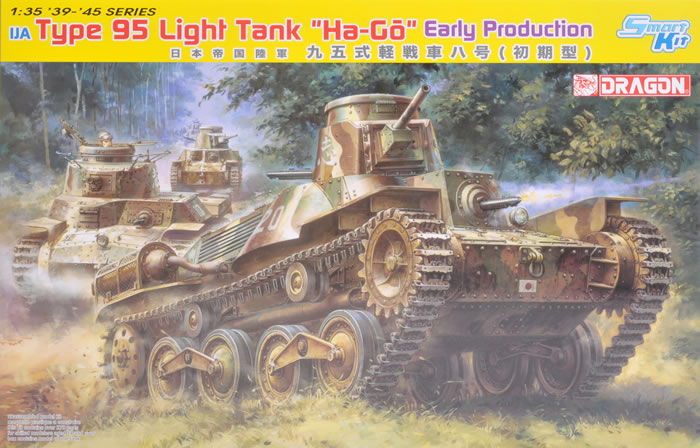|
|
|
|
| Home > Reviews > Axis > Dragon Models Limited 1/35 scale ‘39-‘45 Series Kit No. 6767; IJA Type 95 Light Tank “Ha-Go” Early Production - Smart Kit |
IJA Type 95 Light Tank “Ha-Go” Early Production - Smart Kit
Reviewed by Luke Pitt
Summary
| Stock Number and Description | Dragon Models Limited 1/35 scale ‘39-‘45 Series Kit No. 6767; IJA Type 95 Light Tank “Ha-Go” Early Production - Smart Kit |
| Scale: | 1/35 |
| Media and Contents: | 203 in grey styrene, 51 etched brass, 6 clear styrene, 2 DS Plastic track runs) |
| Price: | TBA |
| Review Type: | First Look |
| Advantages: | High level of detail; excellent surface features; precise fit |
| Disadvantages: | No link and length tracks. |
| Recommendation: | Highly Recommended |
FirstLook
Dragon's 1:35 scale Type 95 Japanese tank is presented in a standard box with a first class illustrationof a group of tanks progressing down a road in Malaya in 1941 adorning the box top lid. In fact, this illustration is one of the best “in action” tank illustrations that I have seen.
The kit comprises 203 plastic parts (6 of which are clear), 51 photo etch parts and 2 lengths of flexible DS tracks.
The lower hull is moulded as a plastic tub and has full underside detail. The rivet detail on this moulding is some of the best that I have ever seen on a plastic model.
The road wheels are very well detailed with the hubs exhibiting superb detail. The inclusion of the “sealing wires” between the bolt heads on the road wheels is noteworthy as this feature is prominent on Japanese tanks of the period but not often rendered. They are however a tad thick. The rubber portion of the road wheel feature faint manufacturer's marks (in Japanese) but I am told they don’t really describe anything. The drive sprockets are presented in two halves and have detail on both sides of each sprocket. The characteristic boomerang shaped bogie assemblies are well done but you may need to leave off one of the photo etch spacers to achieve a snug fit.
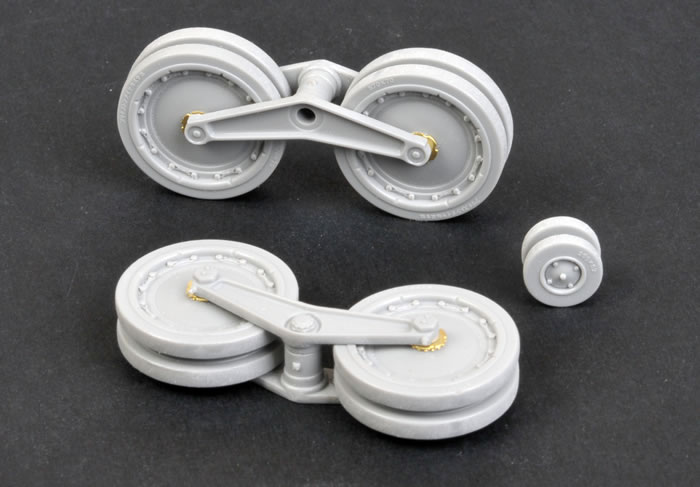
The kit is supplied with two soft full length vinyl track mouldings and are quite simply breath taking in their execution. Not only are the guide teeth hollow but the end connectors are hollow as well.
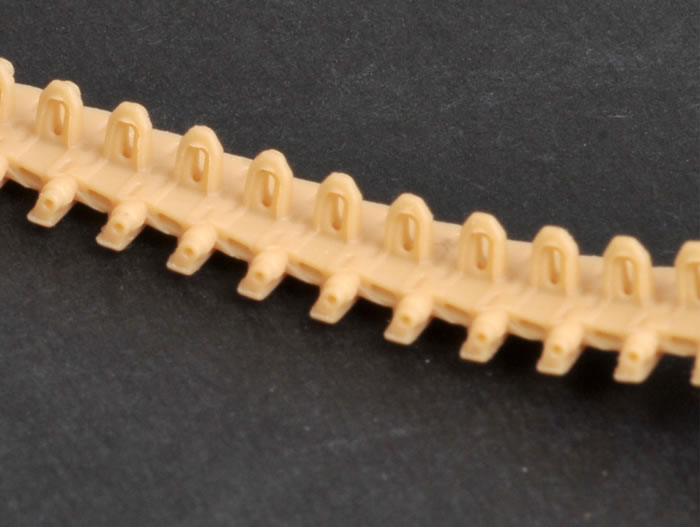
From my experience the characteristic “sag “of most Japanese tanks is almost impossible to achieve in this medium but the upside is that the tracks can be glued together with normal plastic cement
The upper hull comes as a separate central superstructure, with the front plate and rear engine access panels as separate pieces. The rivet heads and weld beads on the hull are accurate in both size and shape. These two features are some of the best renditions I have seen on a plastic kit for quite some time and are a credit to the designers involved. The front hull inspection hatches and rear engine compartment doors are also separate parts; this presents the possibility of showing some internal detail for some future aftermarket sets that may arrive in the future.
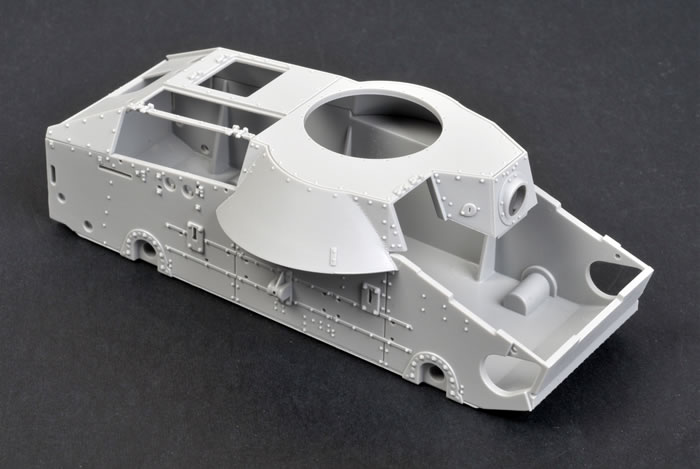
The turret is split into two pieces with the main section presented as one piece item with some wonderful weld bead and bolt head detail in evidence. There is a wealth of detail on the turret ring itself. The main turret hatches are supplied as two pieces and very well detailed but just a little thick, that being said however, I don’t think a plastic molding could produce hatch in a scale thickness as these were incredibly thin on the real vehicle.
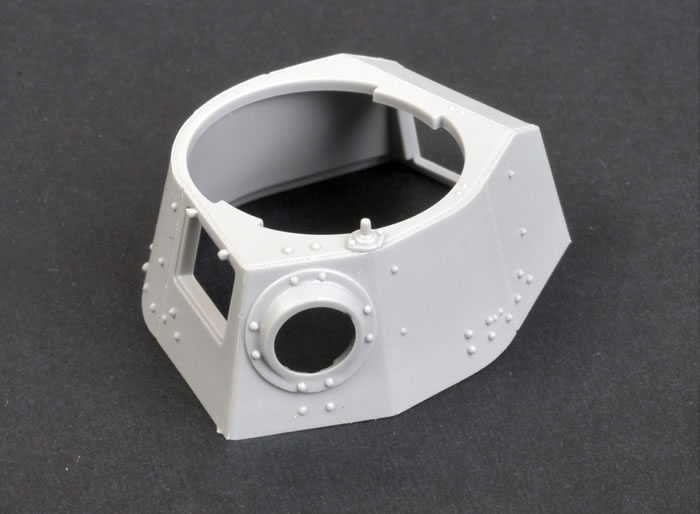
There are separate grab handles for the hatch and the turret moulding, in particular, features subtle weld seams. The grab handles are, in my view, a little overly thick and would be best replaced with thin wire bent to shape.
The gun breech and associated hardware is worth mentioning as it is the best rendered example of this assembly I have seen in any scale. The gun barrel, for example, has a wonderful taper that is so good a replacement barrel would be a waste of money. The machine guns supplied are equally well done and are a marvel to look at.

The kit is supplied with a photo-etched fret that includes items like the muffler guard road wheel inserts. Most of this is well done but I feel the muffler guard is a bit too thick.

Markings are included for four vehicles, each in the standard four colour camouflage of the period with one operating out of Malaya in 1941, one located in Manchuria in 1944, one from the 7th Tank Regiment in the Philippines in 1942 and lastly one from the 13th Tank Regiment located in China.
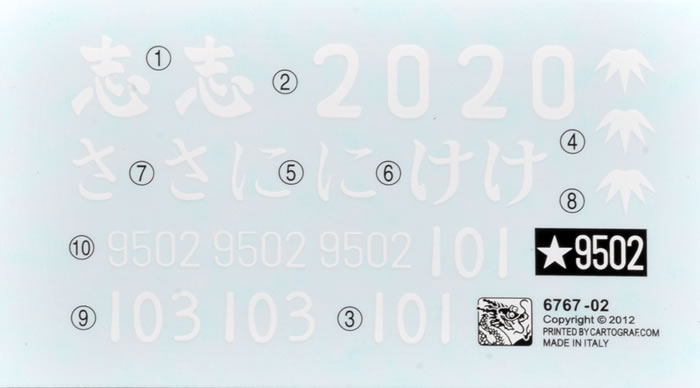
The model is a first class effort and a credit to both Dragon and the designers, as it is both accurate in shape and a vast improvement on the now 20 year old Fine Molds kit. Of particular note is the variety of options included. The hatches may be modelled in either open or closed positions. The machine guns in particular are incredibly well detailed. and the main gun can be positioned off center either to the right or left just like the real vehicle.
The only negative I can see is the omission of individual tracks. But really, 1:35 scale armour kits don’t come much better.
Highly Recommended.
Thanks to Dragon for the review sample.

